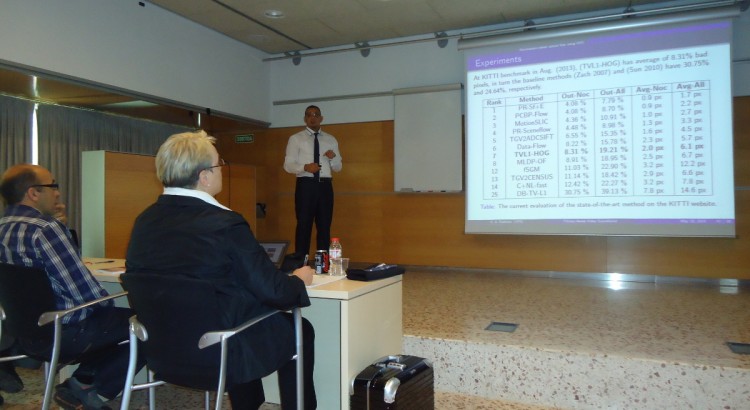Robust analysis and protection of dynamic scenes for privacy-aware video surveillance
Abstract: Recent advances in pervasive video surveillance systems pave the way for a compre hensive surveillance of every aspect of our lives. Computerized and interconnected camera systems can be used to profile, track and monitor individuals for the sake of security. Notwithstanding, these systems clearly interfere with the fundamental right of the individuals to privacy. To alleviate this privacy problem and avert the so-called Big Brother effect, the usage of privacy enhancing technologies is mandatory.
Privacy-aware video surveillance systems are based on a Detection Submodule that detects the so-called regions of interest (i.e. areas to protect to achieve privacy) from the captured video and on a Protection Submodule that protects the detected areas (aiming at preventing identity disclosure). Only a trusted manager might be able to access the protected video and unprotect it, for instance in case of criminal investigations and, in general, under permission of a law enforcer (judge, police, etc.). Most literature on privacy in video surveillance systems concentrates on the goal of detecting faces and other regions of interest, and in proposing different methods to protect them. However, the trustworthiness of those systems and, by extension the privacy they provide, is neglected.
In this thesis, the topic of privacy-aware video surveillance is tackled from a holistic point of view. Firstly, an introductory chapter defines the properties of a trustworthy privacy-aware video surveillance system, and reviews the techniques that can be used in the Detection Submodule and in the Protection Submodule.
The remaining of the thesis is divided into two parts. In the first one, some contributions aiming at improving the detection of regions of interest are developed. Specifically, it addresses our contributions to optical flow detection techniques: it has been found that, despite its usefulness, the widely known variational optical flow has several limitations and shortcomings for providing accurate flow fields for motion estimation problems in computer vision. In order to overcome these limitations, new development models are introduced as an alternative to classic concepts. Two models are proposed in this dissertation in order to improve the robustness of variational optical flow model through tensor voting to be more robust against noise and to preserve discontinuities. In addition, the data term of the optical flow model based on brightness constancy assumption is replaced by a rich descriptor in order to obtain an illumination-robust optical flow model.
In the second part, the protection of regions of interest is addressed. A method based on coefficient alteration in the compressed domain of the video is presented and tested in terms of robustness and efficiency. The processes related to the information security of the data involved in the protection and unprotection processes are also comprehensively taken into account.
The thesis includes tests and implementations for all the theoretical proposals, aiming at demonstrating their validity in a real video surveillance scenario. Finally, a chapter with a summary of the advances presented and further work concludes the thesis.
